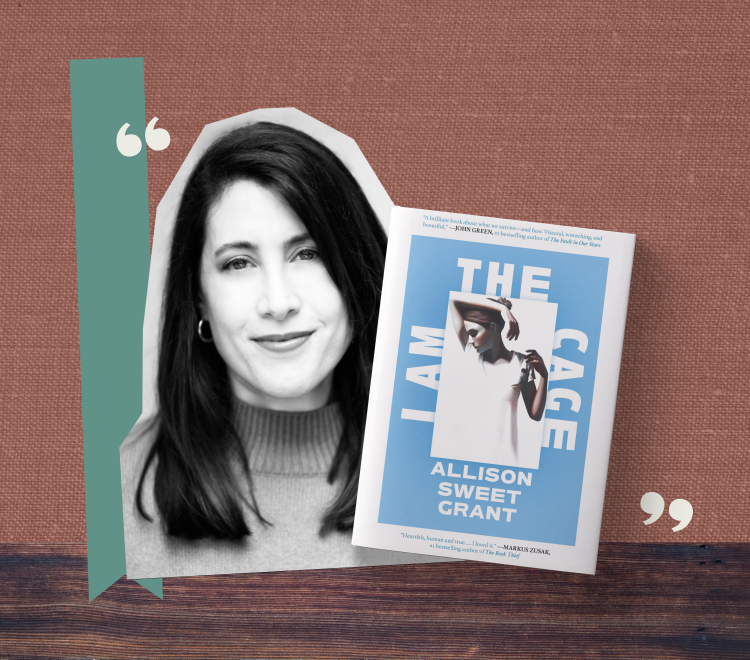Why the ABK Team loves this book:
I Am the Cage, Allison Sweet Grant’s debut novel, tells the story of 19 year-old Elisabeth’s reckoning with her medical trauma and the ways it shaped her life. Using poignant flashbacks, beautiful poetry, and powerful character development, Elisabeth learns to face the past and be honest about her story and scars.
To us, this is a story about integration and trust — about how we accept the hard parts of our story because they make us who we are and about having the courage to let other people know and love us in the midst of our pain. Elisabeth learns to own her story and speak up for herself, not to change the hurt in her past, but to find a new way forward, something we all have to learn over and over in our lives.
Our three favorite quotes from the book:
“That’s what trauma does—it bookends the chapters of your life. It perforates your story with pauses. It demarcates the Before and the After. Part One and Part Two.”
“So maybe instead of looking at the junk drawer as this hidden, disgraceful part of me, instead of fearing it as something that can take me over, maybe I can think of it as something that I overcame. Something that I conquered. Something that I’m proud of. Something that I own.”
“I let myself wonder what would happen if I stopped lumping everyone together as villains. If I stopped expecting the worst of people. The worst of myself. If I stopped believing that everyone could hurt me, that everyone would hurt me, that everyone wanted to hurt me. For just a moment, I let myself wonder what would happen if I just gave someone a chance. If I just gave myself a chance.”
Three questions for the author:
What do you hope young adult readers (and older readers!) learn about the power of their own story from this book?
I Am the Cage begins with the story of a young woman hiding — hiding from the world and hiding from herself. But it’s often out of our most challenging moments that we draw the greatest strength and meaning. If anything, I hope readers recognise the power they have to rewrite their own stories.
The main character, Elisabeth, found refuge in writing poetry that was sprinkled throughout the book. Why was including bits of her writing important to you?
Poetry can be an extremely therapeutic form of self-expression and allows us to understand and convey thoughts and experiences that may be otherwise difficult to describe. For Elisabeth, writing was the only outlet available to her, the only way for her to process the conflict taking root in her body and clouding her mind. It was important to showcase the jumble of emotions that she suffered but could not speak.
This story is about Elisabeth learning to both let herself in and let others in. What did you learn about letting others and yourself in during the process of writing this book?
Because this traumatic experience loomed so large and salient in my mind, I just assumed that everyone around me knew about what I had gone through — that they could see it. I didn’t even realize I was keeping a huge part of me inside and that that was keeping others at a distance. I’ve learned that these things work in tandem — you have to let the Real You out in order to welcome others in.

